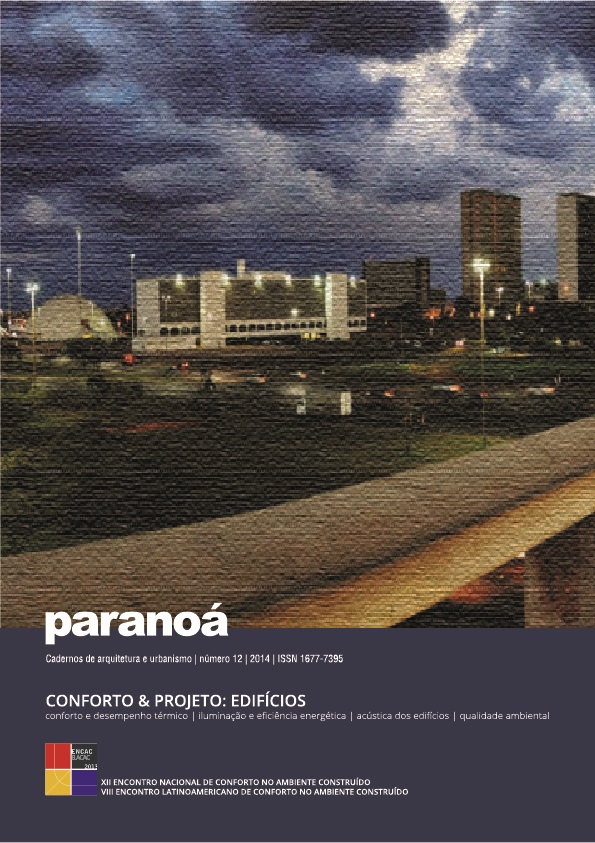Impacto del diseño de la ventana en el aprovechamiento de la luz natural: el caso de San Miguel de Tucumán
DOI:
https://doi.org/10.18830/issn.1679-0944.n12.2014.12296Keywords:
Daylight, Computer simulation, Window design guidelinesAbstract
Daylight is a natural resource available in large quantities, so it should be used, not only to enhance the power saving, but also to create comfortable environments that result in physical and psychological wellbeing of people and increases in productivity. However, daylight is scarcelyutilized in projects. That is the reason because this work aims to integrate the use of this resource since early stages of architectural design. It focuses on studying daylight behavior through the window, considering it as a basic component of buildings. To accomplish this, three-dimensional models are generated which has fixed parameters (location, sky conditions, geometry, reflectivity, etc.) and calculation variables (design parameters of the windows: orientation, size, shape and position) withdifferent ranges of variation. Then, for all models, different metrics of daylight are calculated by computer simulation in Ecotect and Daysim. The metrics are: Daylight Coefficient (DF), Average Hourly Values of Incident Solar Radiation (Rad), Useful Daylight Index (UDI), Daylight Autonomous (DA), Daylight Autonomous Continuous (Dacon) and Daylight Autonomous Maximum (DAmax). The results are examined statistically and they allow to study the influence of each parameter window design in the incidence of daylight at indoors. With this, the most optimal window configurations aredeterminated and design guidelines are generated for the town of San Miguel de Tucuman, which is the case of study in this work.
Downloads
Downloads
How to Cite
Issue
Section
License
Autores que publicam nesta revista concordam com os seguintes termos:
- Autores mantém os direitos autorais e concedem à revista o direito de primeira publicação, com o trabalho simultaneamente licenciado sob a Licença Creative Commons Attribution que permite o compartilhamento do trabalho com reconhecimento da autoria e publicação inicial nesta revista. http://creativecommons.org/licenses/by/4.0
- Autores têm autorização para assumir contratos adicionais separadamente, para distribuição não-exclusiva da versão do trabalho publicada nesta revista (ex.: publicar em repositório institucional ou como capítulo de livro), com reconhecimento de autoria e publicação inicial nesta revista.
- Autores têm permissão e são estimulados a publicar e distribuir seu trabalho online (ex.: em repositórios institucionais ou na sua página pessoal) a qualquer ponto antes ou durante o processo editorial, já que isso pode gerar alterações produtivas, bem como aumentar o impacto e a citação do trabalho publicado (Veja O Efeito do Acesso Livre).















